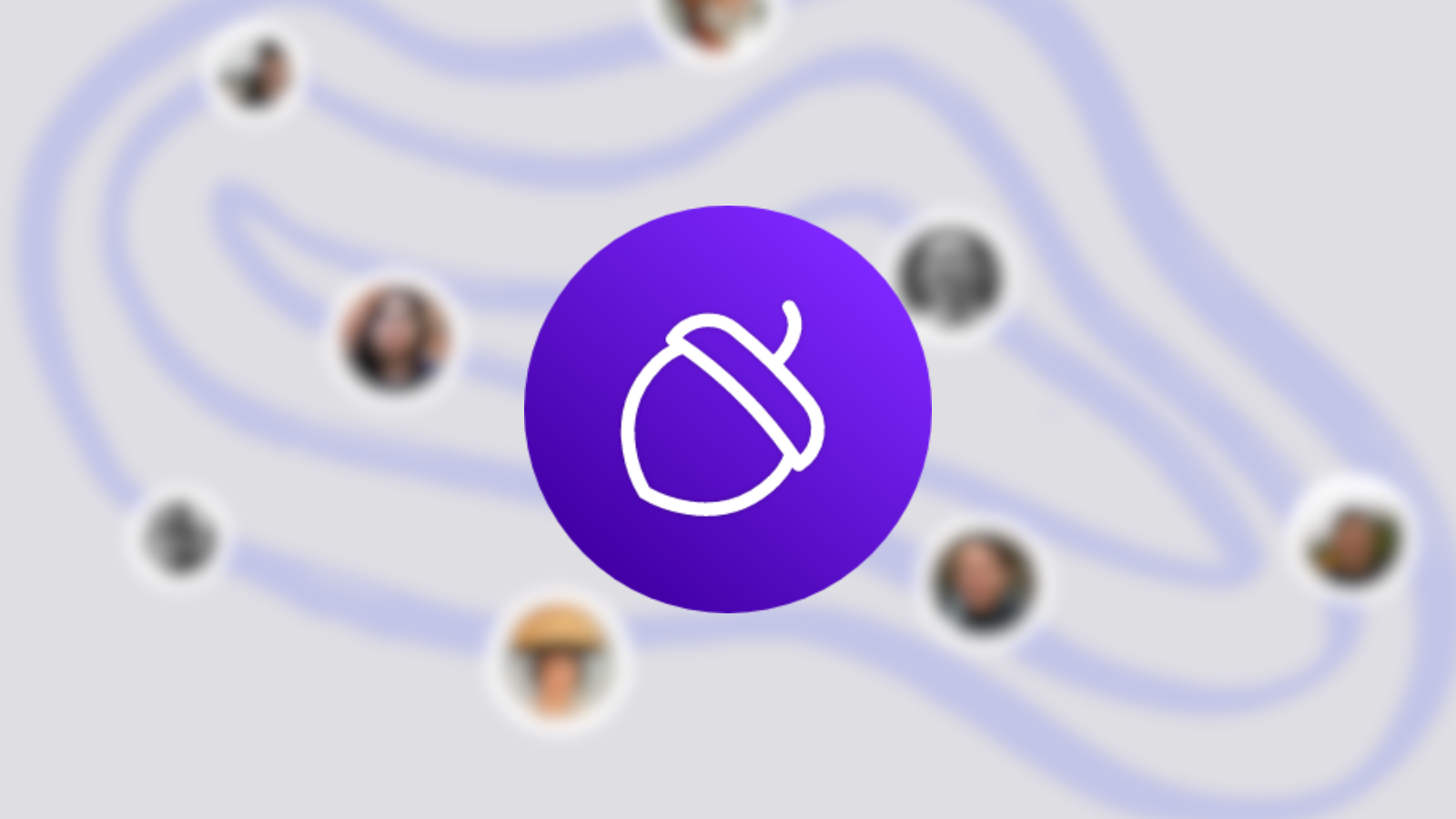You've used the Acorn planning tool or maybe this is the first you are learning about it. Now we're going to explore what's going on underneath the surface that makes it radically different from most collaborative apps.
What makes Acorn unique, beyond the innovations in the UX around new ways of thinking about dependency planning, is that it's a Holochain hApp. This means it's a completely decentralized, peer-to-peer application, that doesn't require any centralized infrastructure or third party hosting.
What does that mean? For comparison, let's start by looking at a traditional collaborative project management tool (think Asana or Trello). This tool presents the user with a web hosted UI that communicates with a central server, with software and databases controlled by the owners/operators of the software (e.g. Asana the company).
While the user can in principle have control over the UI code that they use to connect to the central server (depending whether the owner allows this), they have no control over the software running on the server and only as much control over their data stored on the server as the owner allows.
With centralized data, the owner of the system can decide at a whim to:
- change how the server software works (eg, changing what the algorithm decides to show you)
- share or sell your data to anyone
- use it for their own AI purposes
- delete or restrict access to your data shut down the software entirely, for any reason
Contrast this with a Holochain hApp like Acorn.
When you install the Acorn hApp on your computer, a unique cryptographic keypair is created, allowing you to identify yourself as a particular agent.
Whenever you create a new project, a new shared database using a DHT (distributed hash table) is created which stores that specific project's data. Initially, as you are only the person in the new project you have created, you are the only one storing the data.
However, as other users join your project (using a 5 word secret phrase you share with them), they become nodes of the same project and DHT, meaning they share in the work of storing the data and also become able to collaborate on the project with you.
Any user that has access to a project is able to access any data in that project, regardless of whether it is stored locally on their device. And no user has access to the project and data without the secret phrase.
The computational work that Acorn does with the data is done by code running on the users computers, operating on data stored on the users computer. This is the thing that makes Acorn unique among planning and productivity tools (and which it shares with all Holochain hApps).
Collaboration tools on Holochain come with:
- Direct control over your data: There is no centralized server so no one other than you can control your data or even knows it exists. Only people you choose to share it with have access to it, and you have complete control over the software you're running that operates on that data. And you can evolve your software around the data instead of being tied to a platform.
- Offline collaboration out of the box: Most platform collaboration tools require you to be online. Even Google Docs requires that I set each file to a special status, using their browser to work offline. Holochain based collaboration tools have this out of the box.
- No cloud costs, scales with demand: Nobody is paying for cloud services so there is no cost to host. Not for you, not for the other participants of the application. This means that the overall cost of the application will always be lower than for centralized tools. And scaling an app happens naturally with the growth of more users.
There's a lot more complexity on the Holochain side that allows this to work in a secure, tamper proof way, but for an end user of Acorn, this is all completely invisible. You just get a planning and coordination tool that works out of the box with no configuration, and no need for any centralized computation or database infrastructure.



